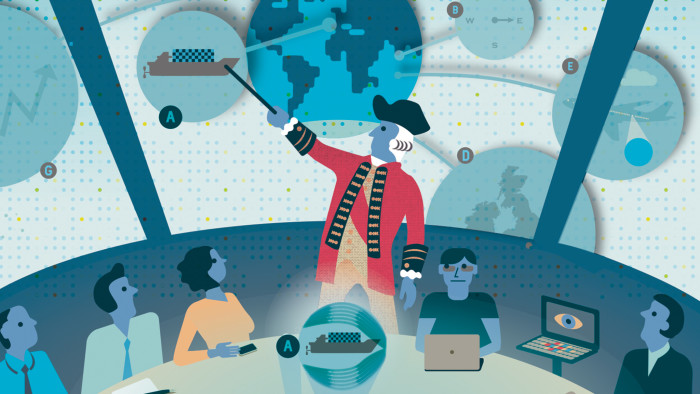East India Company: lessons from a bloody history


Roula Khalaf, Editor of the FT, selects her favourite stories in this weekly newsletter.
In 2013, as part of an in-depth look at G4S, I compared the security and outsourcing group to the British East India Company. At the time, G4S employed more than 620,000 people, and its activities, including managing prisons and immigrant detention centres, were intertwined with some of the most controversial government policies around the world.
Whatever you think of G4S, though, even a cursory study of the EIC’s history reveals it was a lazy and unfair comparison. In its pomp in the 1750s, the EIC was far larger, economically speaking, than any private company today; it accounted for £2m of Britain’s £10m export trade. It was also, under Robert Clive, its reckless and charismatic “chief executive”, one of the bloodiest and most aggressive capitalist organisations ever seen.
Founded in 1599, in a desperate effort to match the Dutch East India Company’s trading success, the EIC was, like its Dutch rival, a chartered joint stock corporation. By the second half of the 18th century, thanks to its state monopoly and Clive’s audacious no-holds-barred military leadership, the EIC had grown to become a powerful “empire within an empire” with extensive and lucrative Indian holdings. It secured its power with a private army, and sustained it through tax revenue as much as commercial profit.
In his new book The Anarchy , about the EIC’s relentless rise, William Dalrymple draws broad parallels with the conglomerates and multinationals of today, such as ExxonMobil, Google and Walmart. The EIC was a pioneer of the limited liability, joint stock approach, with outside shareholders shouldering the risk. However, such companies were also “instruments of rampant speculation [and] economic imperialism”, which made legislators suspicious of the model, as John Micklethwait and Adrian Wooldridge point out in The Company, their 2003 history of corporations.
History shows that “while [the corporation] can be regulated, [it] will use all the resources in its power to resist”, Dalrymple writes. When, in the 1770s, the EIC came close to collapse, it was rescued by a “mega-bailout” from the government because it was “genuinely, too big to fail”.
Still, the EIC also offers some broad lessons in corporate organisation, foreshadowing some of the multinational models that have prevailed since.
The company had a tiny London headquarters but it developed a sophisticated administrative network of accountants, clerks and financial controllers, working through specialist committees, from buying to warehousing.
Modern multinationals often devolve power to front-line units, recognising that local managers have a better feel for what works than distant executives. The EIC had no choice, direct communication being impossible, but sent talented individuals out to India, with the leeway to take important decisions that were reported back to the centre.
This model allowed the EIC to prosper. But it also contained — like some sprawling modern managerial structures — the seeds of its downfall. Mission creep and misbehaviour were constant risks. Extravagant self-dealing, insider trading and exploitation were rife.
The chartered companies had a strong, but morally highly dubious, purpose. The Dutch company’s first voyage carried orders to “attack the Spanish and Portuguese wherever you find them”. When Clive fought and won his most famous victory at Plassey in 1757, as part of a conspiracy against a local ruler, he was flouting explicit instructions from London. When famine hit in 1770, the company committed one of “the greatest failures of corporate responsibility in history”, by continuing to squeeze taxes from starving families under its jurisdiction.
Complacency and bureaucracy were more insidious risks. Micklethwait and Wooldridge explain that the EIC eventually started to build up a “proliferation of boards, councils and committees”. Similarly, administrative accretions and a lack of accountability weighed on Nokia as it struggled to meet the challenge of smartphones in the late 2000s. By the early 19th century the EIC had become an over-comfortable “cradle for Company Man”. It was nationalised and ultimately dissolved before the end of the century.
No company today is capable of a “supreme act of corporate violence” on the scale of EIC’s conquest of India. Despite the ever-present threat of crony capitalism, even large multinationals now have to court Chinese and Indian governments for favour, rather than the other way round. Transparency and technology allow the instant transmission and exposure of abuses of corporate power. The centuries-long tale of the East India Company remains, though, a useful warning of what unscrupulous companies could get away with, if unconstrained by modern regulation, governance and management.
Andrew Hill is the FT’s management editor
Comments